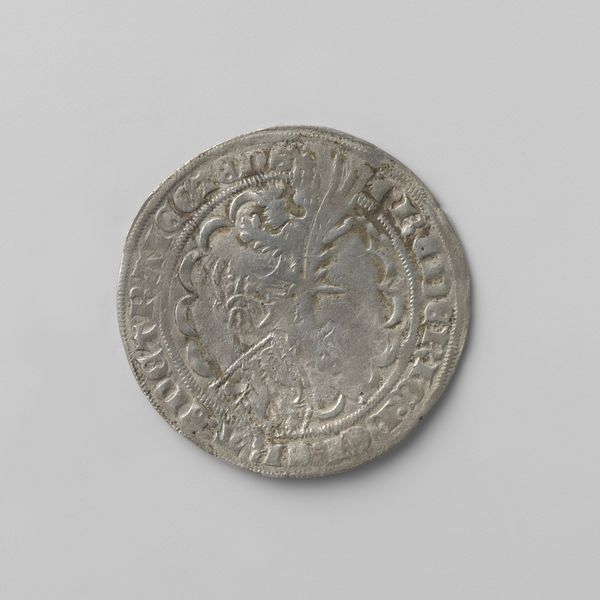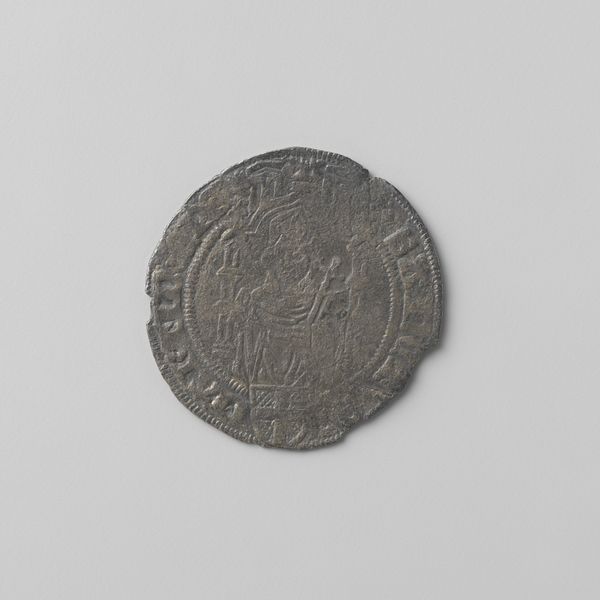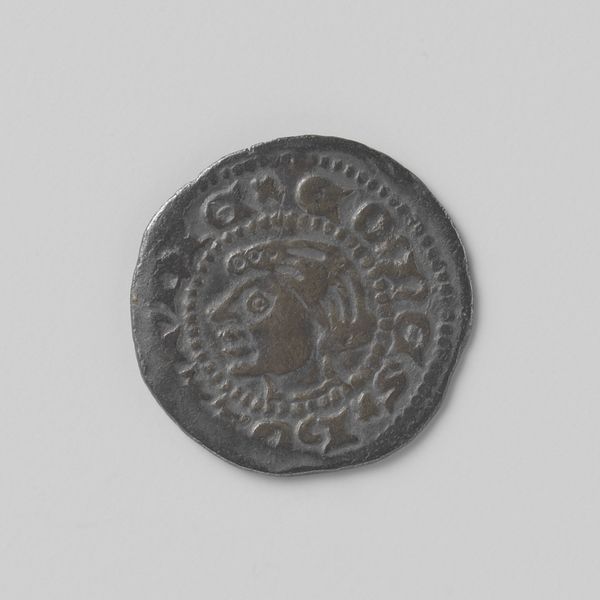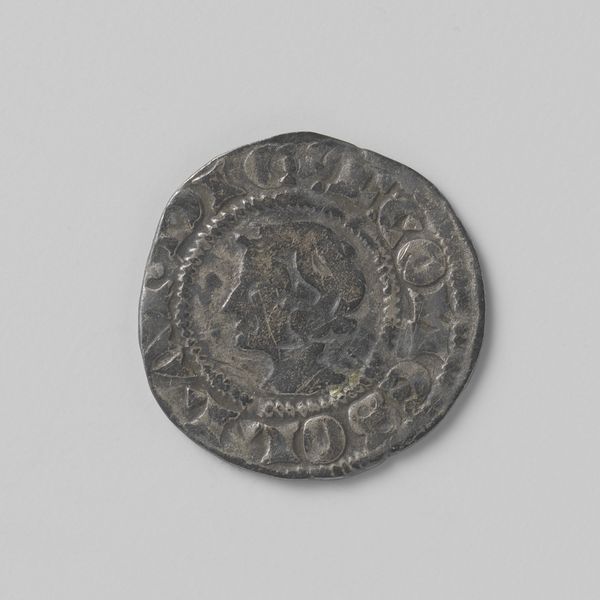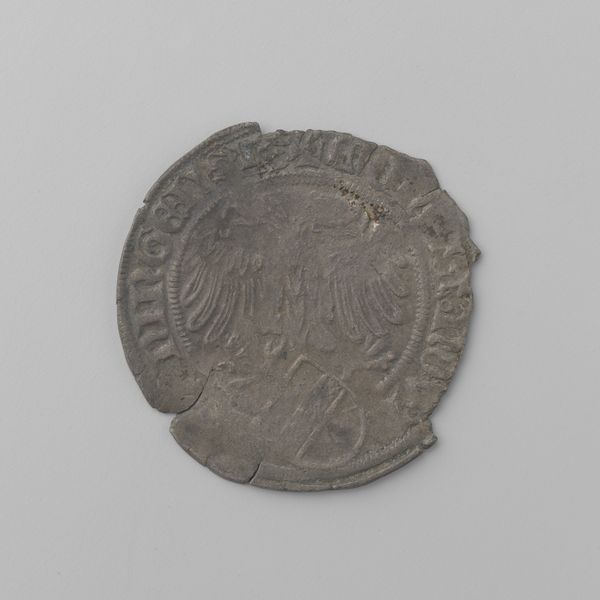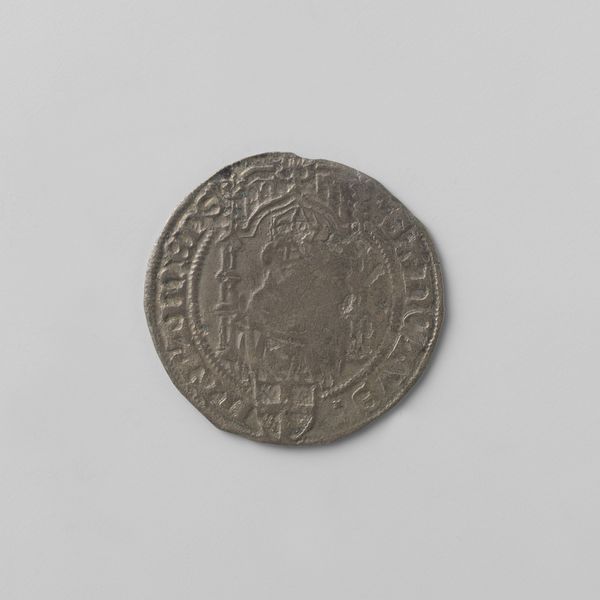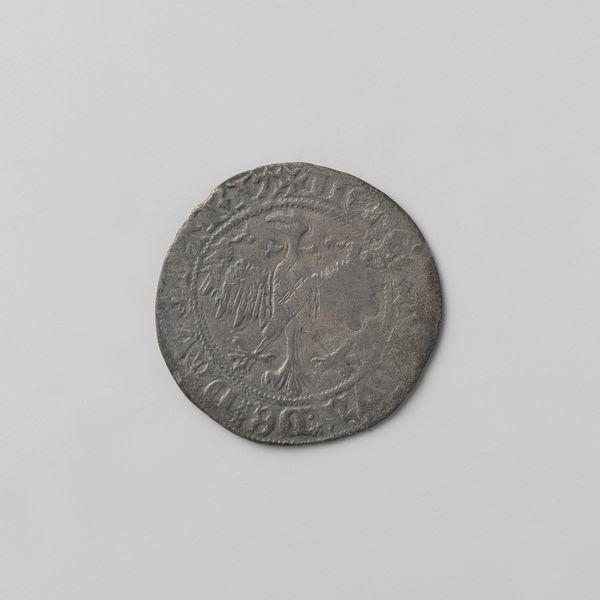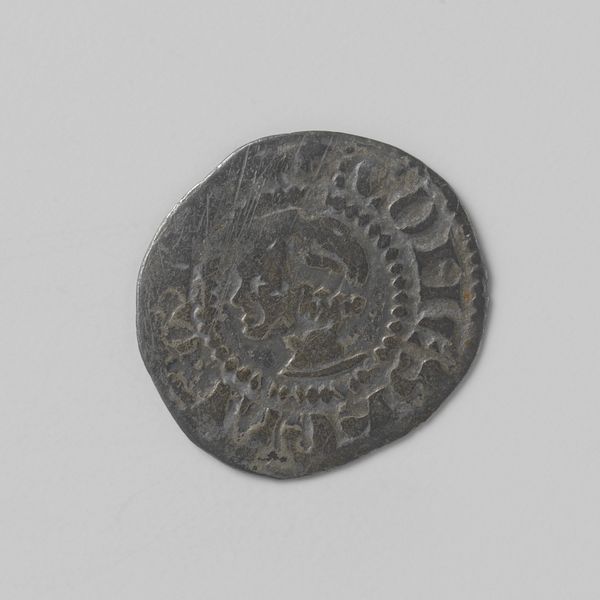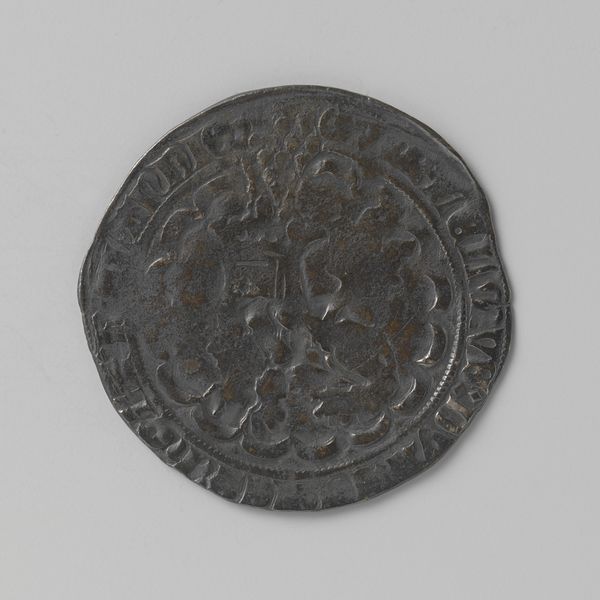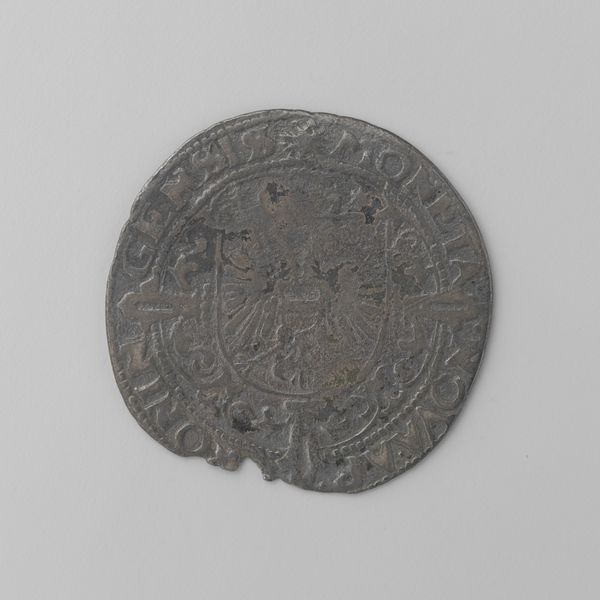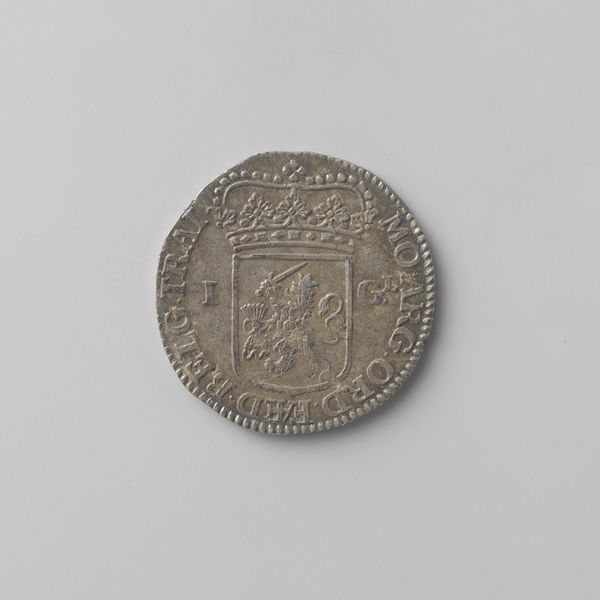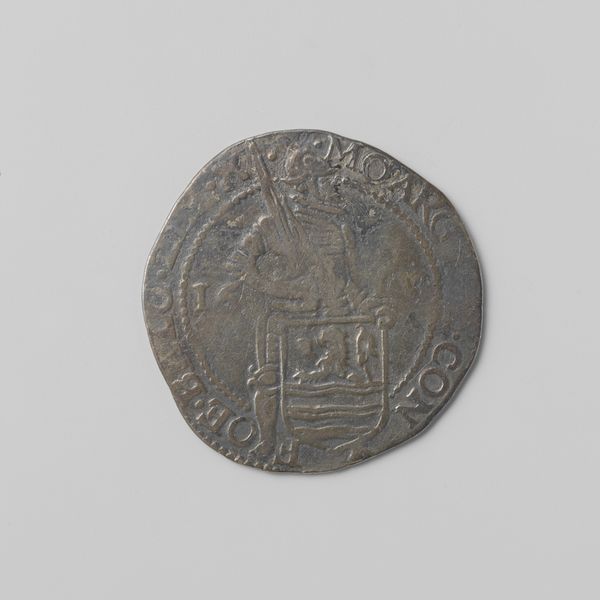
Hollandse leeuwengroot van Willem V, 1345-1389 1354 - 1361
0:00
0:00
print, metal, relief
#
portrait
# print
#
metal
#
relief
#
ancient-mediterranean
Dimensions: diameter 2.7 cm, weight 2.81 gr
Copyright: Rijks Museum: Open Domain
This is a silver Hollandse leeuwengroot, minted between 1345 and 1389 under the authority of Willem V, who was the Count of Holland and Zeeland at the time. As a symbol, the lion on the coin is not just a heraldic emblem; it speaks to ideas of strength, nobility, and rulership during a period of shifting political landscapes. In the late Middle Ages, currency was more than just a medium of exchange; it was a statement of power. The Count’s choice to mint coins with the lion—a figure often associated with monarchy and dominion—reflects his aspirations and the complex dynamics of medieval European politics. Consider this coin as an object that was touched, traded, and carried by people from all walks of life. What stories could it tell about their lives, struggles, and aspirations? The imagery and weight of this small object would have shaped perceptions of value and authority.
Comments
No comments
Be the first to comment and join the conversation on the ultimate creative platform.
